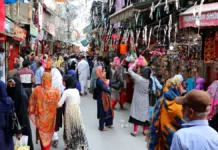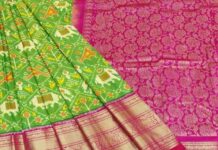 NEW DELHI: It was one hundred years ago on April 12 that Mahatma Gandhi, a feisty barrister newly returned from South Africa, stepped foot for the first time in Delhi.
NEW DELHI: It was one hundred years ago on April 12 that Mahatma Gandhi, a feisty barrister newly returned from South Africa, stepped foot for the first time in Delhi.
Mohandas Karamchand Gandhi, who returned to India from South Africa on January 9, 1915, arrived in Delhi on April 12 along with his wife Kasturba and others. He stayed here two days and records say that he visited the Qutab Minar, Red Fort, St Stephen’s college and the Sangam Theatre during that time.
Upon his return to India, Gandhi had embarked on a tour of the country to observe and understand the life and miseries of ordinary Indians and feel the pulse of the nation before undertaking any political action, as was suggested to him by his political guru, Gopal Krishna Gokhale.
“On April 12, Gandhiji arrived in Delhi along with Kasturba, Raojibhai Kotwal, Deodhar and others. He parted company with all except Deodhar. He visited the Qutub Minar, which led to many thoughts. His guide, who was a scholar, told him that the monument was made of material collected by destroying Hindu temples.
“Bapu told us in the Aga Khan Palace detention camp how the sight had made him feel sick at heart. Gandhiji symbolized in his person equal respect for all religions. Memories of religious fanaticism responsible for the destruction of Hindu temples caused him deep pain,” says an excerpt from the 1993 book, ‘Mahatma Gandhi – India Awakened’, by Pyarelal and Sushila Nayar.
“The 13 April entry in his Diary notes a function of college students in the morning. It refers to St Stephen’s College. Presumably, he stayed with (the then) Principal Sushil Kumar Rudra, though there is no mention of this.
“The Red Fort… again made him think. A born democrat, the relics of autocratic ways of Mogul emperors and their torture chambers had upset him, he told us,” says the book published by Navjeevan Publication House, Ahmedabad.
On April 14, Gandhiji left for Vrindavan. He later visited Mathura and thereafter took a train to Madras (now Chennai) and reached the south Indian city on April 17.
The iconic St Stephen’s college, which played host to Gandhi a century ago, recognizes and cherishes the historic moment.
“I am happy to confirm that the Mahatma did visit the college in 1915. We have a group photograph taken on the occasion adorning the wall of the Principal’s office,” said Dr Valson Thampu, Principal of St Stephen’s College.
“Gandhiji was a close friend both of the then Principal Sushil Kumar Rudra and of Charles Freer Andrews. It was Rudra who motivated Andrews to join Gandhiji in South Africa. This is a pointer to the breadth of vision that characterized the college then. The college cherishes this memory,” Thampu told PTI.
“To me, Gandhi’s visit to St Stephen’s is not something to be bragged about or romanticized… remembering Gandhiji should be an occasion not of sentimentality but of truth, for truth is God,” he said.
Over time, St Stephen’s college relocated to its present location in the North Campus of the Delhi University, while the original building in Kashmere Gate now houses the office of Delhi’s Chief Electoral Officer.
Marking the centenary of that maiden visit, the electoral office along with the National Gandhi Museum planned a discussion on Gandhi. They had a small function at the old St Stephen’s building where they presented a copy of the rare photograph of Gandhi taken during his very first Delhi visit to the Chief Electoral Officer and the college representative,” informed A Annamalai, Director, NGM.
“It is indeed a moment of pride for us to mark such a historic occasion,” he added.
It was in Delhi that Gandhi breathed his last, falling prey to an assassin’s bullets on January 30, 1948, 33 years after his first visit to the city.-PTI






